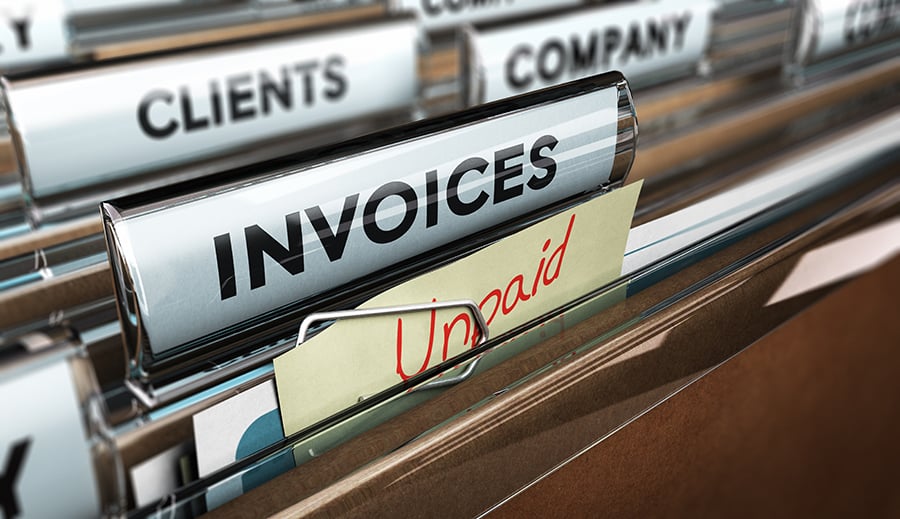More and more companies end up or are in financial difficulties, a current topic in the daily news

On average, between 40 and 50 companies go bankrupt in Belgium every day, leaving unpaid bills, unemployment and disrupted supplies. The reality is that when one company goes bankrupt, it can trigger a domino effect for companies they regularly do business with.
B2B companies are therefore tightening up their credit management and customer acceptance processes. Many companies already gather a lot of information. However, most companies do not yet apply it properly, or use it incorrectly, or even interpret it incorrectly.
Companies fail to monitor their regular customers in a consistent manner. Yet 3 out of 5 bankruptcies are among the regular clientele.
From the 400 requests we receive on average each month to test our services, 20% of the companies still do not use company credit information and obtain information sporadically. 70% use business information from time to time, but without really understanding the credit risk points. Only 10% use company credit risk data or information efficiently on a daily basis.
That is why we would like to go through 5 indicators with you, to spot a sinking ship.
Identifying the warning signs
Circumstances change constantly: a company that is booming one month can find itself in debt the next. One big customer going bankrupt can completely disrupt the cash flow of a smaller company.
It is therefore necessary to keep your eyes open for all the warning signs of a company in financial distress. The best way to keep an eye on your customers is to check their company credit report.
A company credit report is full of important financial information, director data, negative information and other important company data. Most of the elements in a company credit report are there to analyse the performance, the stability and the resilience of a company.
We would like to list the elements that you should pay extra attention to:
1. Has the company's credit score dropped?
A company credit scorecard algorithm takes into account all factors of a company's credit report and assigns a score to a company in this way. Thus, the credit score of potential customers/suppliers tells you the probability that a company will go bankrupt in the next 12 months.
If a company credit score drops, then somewhere on the report is an indicator that something within that company has declined. Creditsafe's company credit reports give you a breakdown of why the score is going up or down, so you can easily pinpoint the reason in our comments section.
2. Has the recommended company credit limit dropped?
A company credit limit, if you work 'on credit' (= payment afterwards) with your professional business relations, is the total recommended credit amount that can be outstanding at any given time.
This is a good indicator for businesses. If this amount drops, it can be a warning sign that the company cannot take up a certain amount of credit, which can indicate that the company is having trouble paying its invoices.
By paying attention to this indicator, you can ensure that you can deal up to a recommended limit.
3. Is the company paying its invoices more slowly and beyond terms?
Trade payment data or the payment experience shows how well and how consistent a company pays its invoices. At Creditsafe, these are shared by companies that are part of our Trade Payment Data program.
If the company is in financial difficulty, their payment behaviour is usually one of the biggest signals of a downward trend. If they are struggling within the company, this will usually manifest itself in a delay of their payments and even beyond terms.
The data will show you how many invoices were paid within the agreed terms, were paid late or are still outstanding. It will also give you an average 'Days Beyond Terms' or 'DBT score'. This is the average number of days an invoice of a company is still due, after the invoice deadline, until the invoices are paid. The 'DBT' thus helps you to adequately adjust your payment terms per customer or credit risk category.
4. Does the company have a reputation or history of director changes?
A high turnover of personnel at top level can indicate internal difficulties within a company.
For example, if a new director is appointed regularly, this may indicate that there are problems within the company or that there are differences of opinion at the highest level. This may lead to problems with staff, disrupting workflows and ultimately harming the company.
Be alert for directors and their terms of appointment. Also note that if one of the directors has a previously bankrupt company, this can be an important indicator of how they do business.
Always conduct a due diligence check on directors of companies you are dealing with. Through our platform, you can easily investigate the various directors (and their background), as well as whether they are political exposed (= PEP) and whether they are involved in fraud, money laundering and the financing of terrorism.
5. How sustainable are the companies to which they are linked?
If your customer or supplier is part of a group structure, always check how strong the other companies are within this composition.
It is very common for companies within a chain, a large group or companies run by the same director(s) to shift their profits to support each other.
But as with many organisations, if one link breaks, the whole thing risks collapsing like a house of cards. A company that fails within the group structure can have a domino effect on the company with which you do business. If a parent company is in bad shape, this has negative consequences for the subsidiaries. Think for example of 'Thomas Cook'.
Make it therefore a habit to check the companies within a group structure as well.
Daily alerts

Sometimes there are no warning signs that a company is in financial distress, at least on paper. Therefore, there are other ways to find out if a company is in trouble.
• A change in communication style
If the communication relationship with your customer or supplier changes, this could be a sign that something is not right.
For example, if you are in regular contact with them and they start ignoring your emails regarding payments, this could be a signal that something is wrong. Similarly, if they constantly ask you for a payment extension, this is a clear sign that there is not enough money.
Finally, if you are constantly asked for extra goods and services, this may be a signal that they need extra resources to get by. So be vigilant for any changes in your relationship.
•You can no longer reach your contact person
Fraudulent companies and even companies that were once legitimate but are struggling will sometimes try to get rid of unpaid invoices.
If your emails are bounced back or the phone is not answered, you should react quickly. For example, check if the company's website is still up and running or if possible visit their office to see if they are still active.
If you are unable to reach anyone within the company and you have a late, outstanding invoice with them, you should definitely consider taking legal action.
• Accounting or invoicing problems
If your customer constantly responds with the excuse that they are having accounting problems, this could be a warning sign that they are having trouble paying their invoices. Common excuses include that they have changed bank accounts, that they need to check the details with the bank or that their accountant is ill.
Another common excuse is that there are problems with the invoice. The address is wrong, the name of the account holder is incorrect, etc. Not only does this slow down the invoice process. You also have to correct the invoice again, which again delays the payment.
These different signals should be kept in mind.
Monitor the companies you do business with
Unfortunately, we are no fortune-tellers. It is a difficult task to fully know the internal management of your business relations. Therefore, use data to make informed decisions.
As mentioned above, there are various solutions, tips and signals to check the creditworthiness and reliability of your business relations.
Besides a good credit risk workflow, Creditsafe offers a monitoring solution, where you can easily track your business relationships. This way, you can monitor your entire portfolio on a daily basis, without having to credit check them individually and manually.
Our system keeps an eye on your customers and suppliers, in the background, on the different (financial) elements and warns you by e-mail if anything changes within their company credit report.